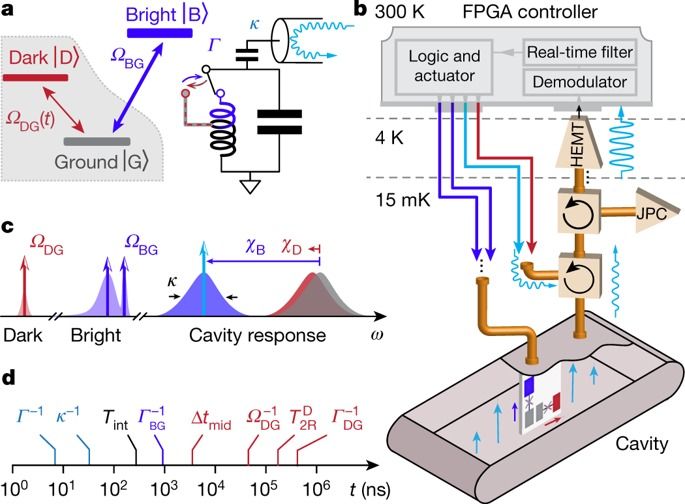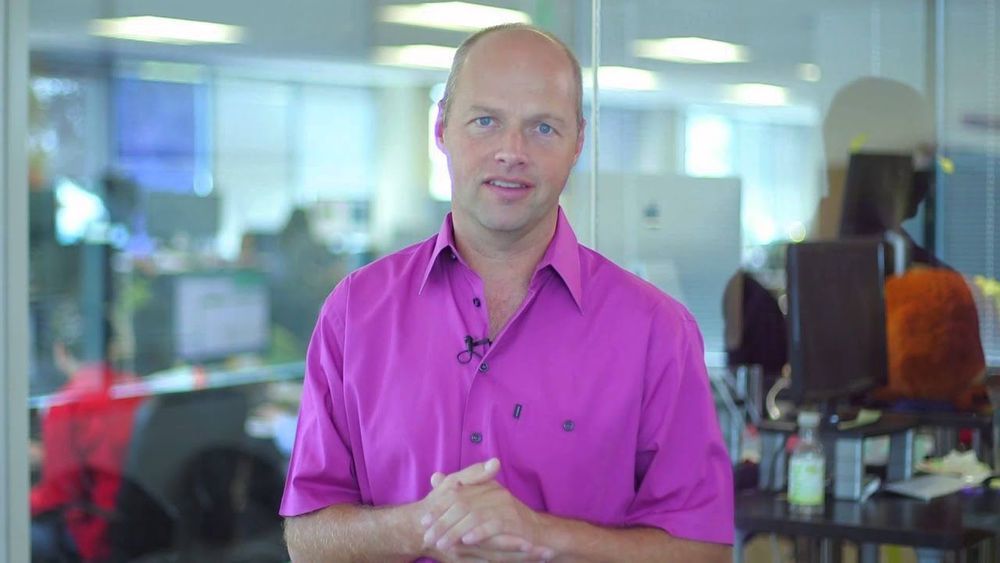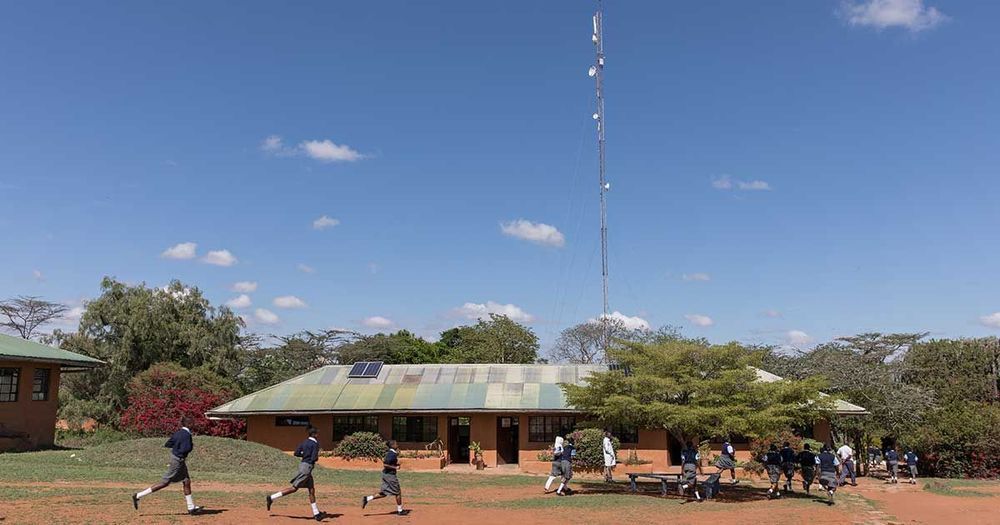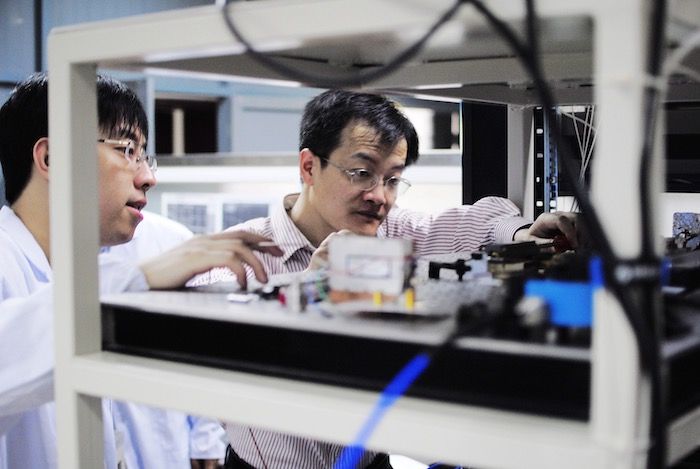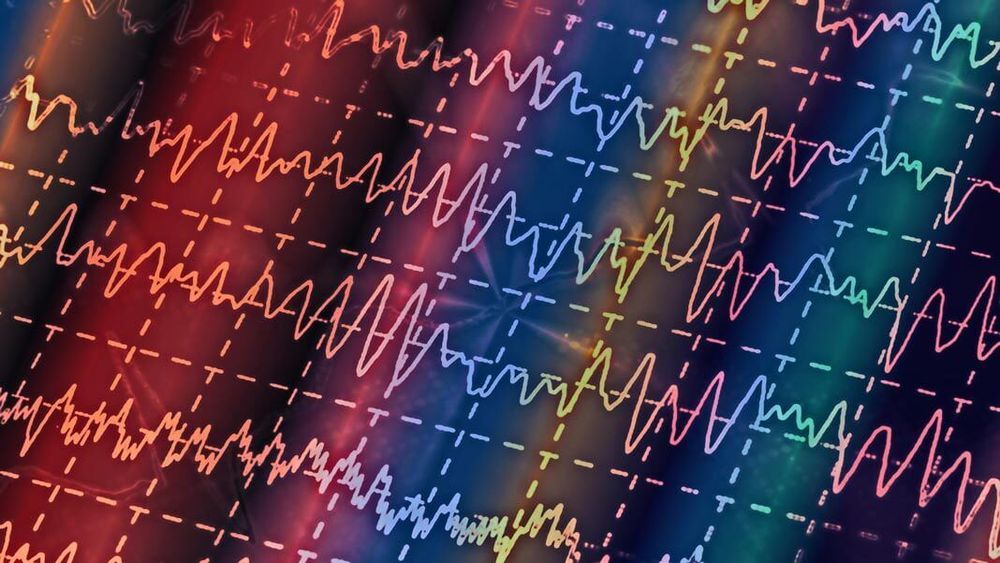In quantum physics, measurements can fundamentally yield discrete and random results. Emblematic of this feature is Bohr’s 1913 proposal of quantum jumps between two discrete energy levels of an atom. Experimentally, quantum jumps were first observed in an atomic ion driven by a weak deterministic force while under strong continuous energy measurement2,3,4. The times at which the discontinuous jump transitions occur are reputed to be fundamentally unpredictable. Despite the non-deterministic character of quantum physics, is it possible to know if a quantum jump is about to occur? Here we answer this question affirmatively: we experimentally demonstrate that the jump from the ground state to an excited state of a superconducting artificial three-level atom can be tracked as it follows a predictable ‘flight’, by monitoring the population of an auxiliary energy level coupled to the ground state. The experimental results demonstrate that the evolution of each completed jump is continuous, coherent and deterministic. We exploit these features, using real-time monitoring and feedback, to catch and reverse quantum jumps mid-flight—thus deterministically preventing their completion. Our findings, which agree with theoretical predictions essentially without adjustable parameters, support the modern quantum trajectory theory5,6,7,8,9 and should provide new ground for the exploration of real-time intervention techniques in the control of quantum systems, such as the early detection of error syndromes in quantum error correction.
Putting a bit of positive spin on Birthdays and why you should probably see them as a good thing in the context of aging research.
Not so long ago, it was my 44th birthday, and I’ve finally decided to write something that I’ve been reflecting on for a while. To some people, a birthday is a cause for celebration; for others, it is viewed as a bad thing.
Yes, if you take the negative view, you could see it as simply a reminder of being another year older and another year closer to the grave. However, this is not how I see it; in fact, I think quite the opposite. I see it as another year closer to our goal: the defeat of age-related diseases due to the progress of rejuvenation biotechnology that offers longer and healthier lives.
From my point of view, viewing birthdays, or, indeed, the passing of time, as a positive or negative thing is largely a question of knowledge and understanding of the aging research field, which ties in with what I want to address today.
Artificial Intelligence (AI) is a field that has a long history but is still constantly and actively growing and changing. Artificial Intelligence (AI) technology is increasingly prevalent in our everyday lives. It has uses in a variety of industries from gaming, journalism/media, to finance, as well as in the state-of-the-art research fields from robotics, medical diagnosis, and quantum science.

Udacity was born out of a Stanford University experiment in which Sebastian Thrun and Peter Norvig offered their “Introduction to Artificial Intelligence” course online to anyone, for free. Over 160,000 students in more than 190 countries enrolled and not much later, Udacity was born.
Udacity, a pioneer in online education, is building “University by Silicon Valley”, a new type of online university that: – teaches the actual programming skills that industry employers need today; – delivers credentials endorsed by employers, because they built them; – provides education at a fraction of the cost and time of traditional schools.
NASA’s administrator warned that the threat of a meteor crashing into Earth is bigger than we might think.
Jim Bridenstine told the International Academy of Astronautics’ Planetary Defense Conference on Monday that “the reason it’s important for NASA to take this seriously is something you call the ‘giggle factor,’” or scientific theories that seem too ridiculous to be likely.
“We have to make sure that people understand that this is not about Hollywood. It’s not about movies. This is about ultimately protecting the only planet we know right now to host life, and that is the planet Earth,” he added.
Nowhere is that clearer than in Africa, which has the world’s lowest share of people using the internet, under 25%. The cohort of 800 million offline people spread across the continent’s 54 countries is younger and growing faster than most, but incomes are lower and a larger share of residents live in rural areas that are tough to wire for internet access—or, for that matter, electricity. Now, however, a handful of phone purveyors are trying in greater earnest to nudge internet-ready upgrades into African markets, with models designed with an eye toward rural priorities (first those of rural India, where they’re already hits), rather than battered thirdhand flip phones from the heyday of the Spice Girls.
About half of humanity don’t have internet access, and a lot of those people are in Africa. Enter a $20 device with smartphone brains and a five-day battery.
According to a theoretical paper published in the Annals of Physics, by Dr. Ovidiu Racorean from the General Direction of Information Technology in Bucharest, Romania, the geometry of spacetime around a rapidly spinning black hole (Kerr black hole) behaves like a quantum computer, and it can encode photons with quantum messages.
The protocol, dubbed Walk Again Neuro-Rehabilitation (WA-NR), first uses EEG to record and control virtual avatars and robotic exoskeleton walkers while the patient wears a “tactile shirt” that offers them sensory feedback. This stimulation theoretically teaches damaged nerves to reroute their motor functions to healthy ones. Following the program for just three years, the patients—some paralyzed for decades—dramatically regained sensation in their lower limbs. They could feel where their legs were in space and better control their lower limbs. Some even reported feelings of normal, welcomed pain after a sharp jab.
The current study, published in Scientific Reports, takes neurorehab a step further. In two patients from the original cohort, the team further trained and examined their neuro-recovery in detail. Patient P1 was a middle-aged man paralyzed for 4.5 years at the onset of the study; P2, a 32-year-old, had been paralyzed for a decade. Although trained with WA-NR, both patients scored on the low end of overall movement, with the ability to extend their knees at most.
For each training session, the patients wore an EEG cap to measure movement intent and had eight electrodes placed on the skin of each leg to stimulate muscles. Simultaneously they wore a haptic shirt, which gave them a sense of their body in space by stimulating their forearms.
